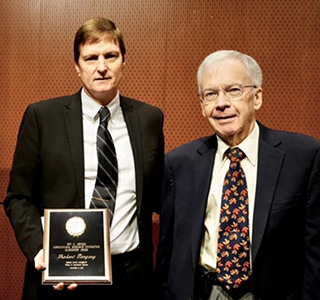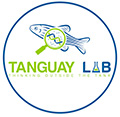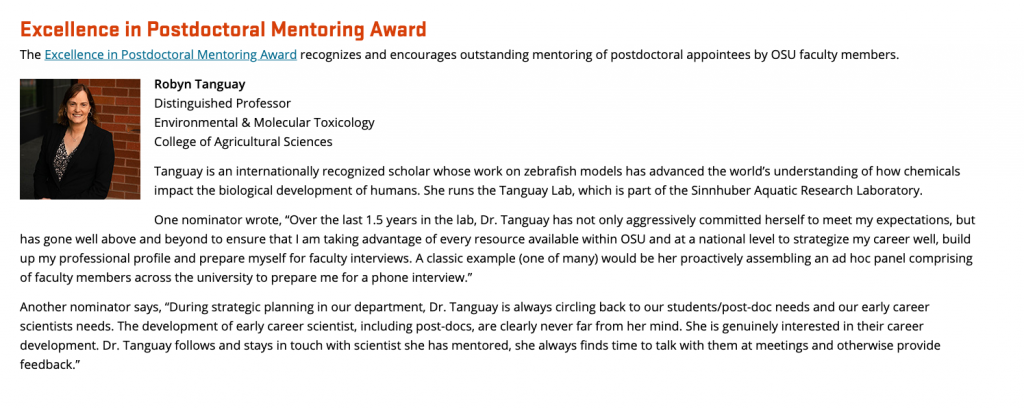This will be awarded to her during the University Day celebrations on September 14, 2021.
Category: Awards
Yvonne Rericha receives the 2020 KC Donnelly External Award
2020 K.C. Donnelly Award Winners Announced
Congratulations to 11 exceptional SRP trainees who received a 2020 K.C. Donnelly Externship Award Supplement to enrich their research in environmental health science! This year’s awardees are: Ahlam Abuawad, Juliana Agudelo, Jogen Atone, Jessica Ewald, Jamie Kelly, Katlyn McGraw, Yvonne Rericha, Anna Robuck, Maya Spaur, Paige Varner, and Hao Wang. Learn more about the trainees and their awards on the 2020 Winners webpage.
The award provides the SRP trainees with funding for an externship at other SRP centers, government laboratories, and state, local, or tribal agencies to support transdisciplinary research and collaboration. Applications are accepted between January 1 and January 31 of each year. We encourage trainees to start contacting potential externship mentors before beginning their applications.
Dr. Robyn Tanguay awarded Agricultural Research Foundation Distinguished Faculty Award!

Congratulations to Prarthana for Winning Best Poster at the Annual SuperFund Research Meeting
Prarthana Shankar was awarded best poster in the Environmental Science and Engineering section at the SRP Annual Meeting. Her poster was titled “Identification and Functional Characterization of the AHR2-Dependent Gene, wfikkn1, in zebrafish. Congrats!
Prarthana Shankar wins a poster award at Teratology Society Meeting!
Prarthana Shankar wins a poster award at Teratology Society Meeting!
New NIEHS R01 Award: “DEFINING THE DEVELOPMENTAL AND TOXICOLOGICAL ROLES OF THE AHR-REGULATED SOX9 LNCRNA IN ZEBRAFISH”
Dr. Tanguay was awarded a 5 year R01 award from NIEHS.
PROJECT SUMMARY/ABSTRACT The aryl hydrocarbon receptor (AHR) is required for proper vertebrate development and is activated by a diverse group of chemicals including common pollutants such as chlorinated dioxins, polycyclic aromatic hydrocarbons (PAHs), and coplanar polychlorinated biphenyls. In vertebrates, exposure to chemicals that activate the AHR during early life stages is associated with adverse birth outcomes and impaired neurodevelopment; however, the signaling events downstream of AHR and the genes contributing to toxic responses remain largely unknown. Our long-term goal is to decipher conserved AHR-mediated biological responses via discovery and validation of the causal genes and signaling mechanisms involved in AHR regulated developmental and toxicological processes. We previously identified a novel and phylogenetically conserved long non-coding RNA (slincR) that is induced by multiple environmentally relevant AHR ligands. SlincR is required for the AHR-induced repression of sox9b, a master regulator of cartilage development, and plays a causal role in AHR-mediated hemorrhaging and cartilage defects. The objective of this proposal is to identify the developmental and toxicological roles of the AHR-regulated lncRNA, slincR, in zebrafish. The central hypothesis is that slincR is a critical AHR-downstream signaling factor potentiating adverse developmental responses to diverse xenobiotic chemicals. Our rationale is that understanding how slincR functions and what other factors it interacts with will deepen the understanding of AHR-signaling with the potential to uncover human therapeutic targets for AHR-related disease. We will test our hypothesis by performing loss- and gain-of-function studies to determine the in vivo role of slincR in AHR regulated developmental and toxicological processes (Aim 1). To understand the slincR structure-function relationship with AHR signaling, we will perform structure-mapping experiments and identify the slincR interacting proteins and genome-wide targets (Aim 2). We will use computational approaches to integrate the findings of Aims 1 & 2 into the construction of an AHR gene regulatory network, establishing a systems-level understanding of slincR in AHR-regulated biological processes (Aim 3). This contribution is significant as it will unravel the functional impact of AHR activation on slincR expression and provide a new paradigm for understanding AHR-dependent cellular responses. The proposed research is innovative as we employ cutting-edge technologies new to the field of environmental health sciences. Our proposal will also help to describe a novel adverse outcome pathway (AOP) for dioxin-like AHR ligands that incorporate multiple biological levels including molecular structure, molecular interactions, co- regulated genes, signaling networks, tissue development and whole animal phenotypes. These studies will serve as a template for the systematic functional characterization of lncRNA potentiating biology and disease.
Prarthana Shankar, Doctoral Student, won “Best Graduate Student Poster Presentation Award” at PANWAT 2018 Annual Meeting
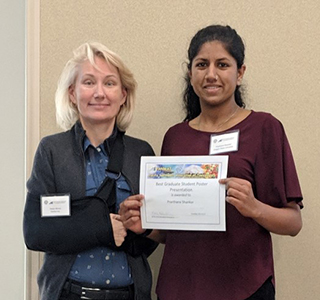
Dr. Courtney Roper won “Best Postdoctoral Researcher Award” at the Pacific Northwest Association of Toxicologist (PANWAT) 2018 Annual Meeting
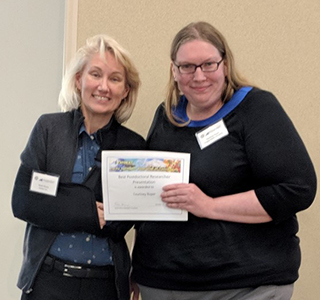
Congratulations to Prarthana Shankar for winning a poster at the 2018 Superfund Research Program (SRP) Annual Meeting
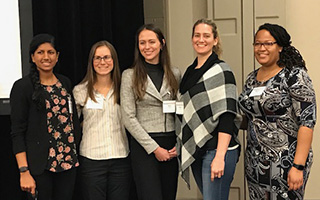
Congratulations to Dr. Tanguay for being awarded the OSU Roy G. Arnold CAS Leadership Award!
